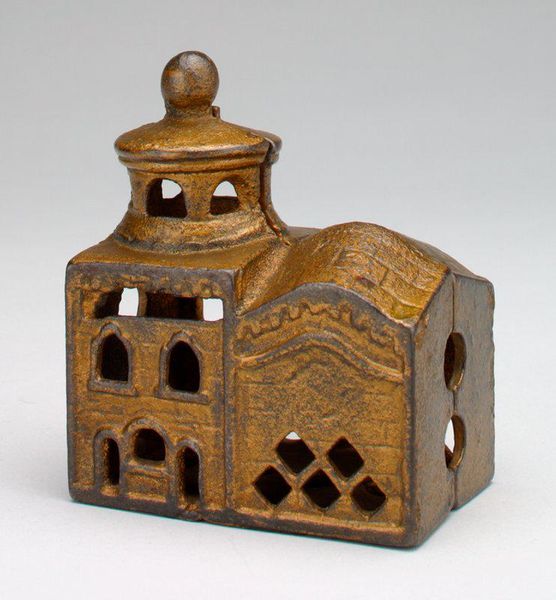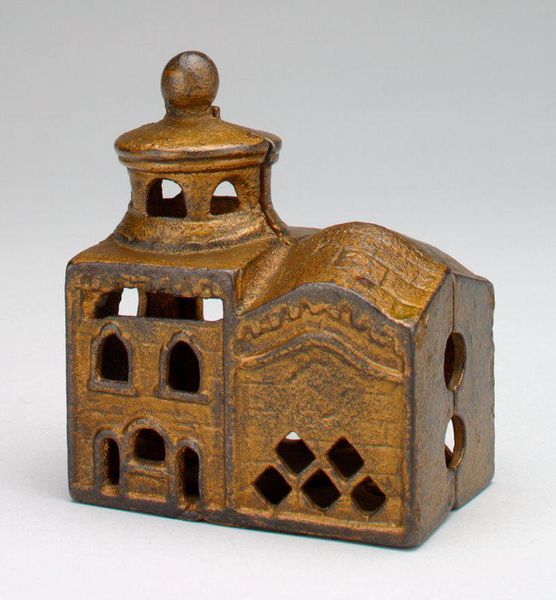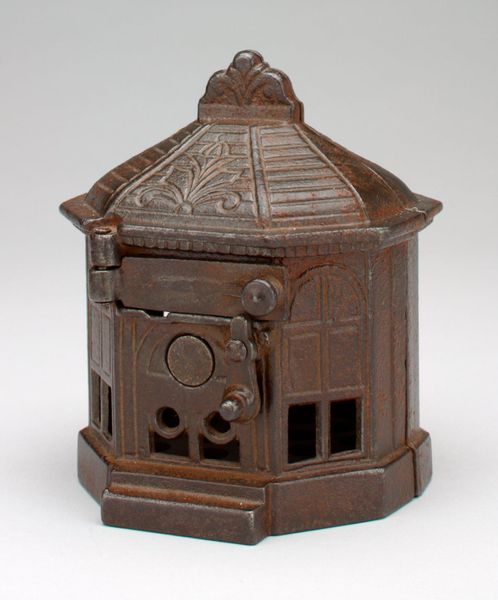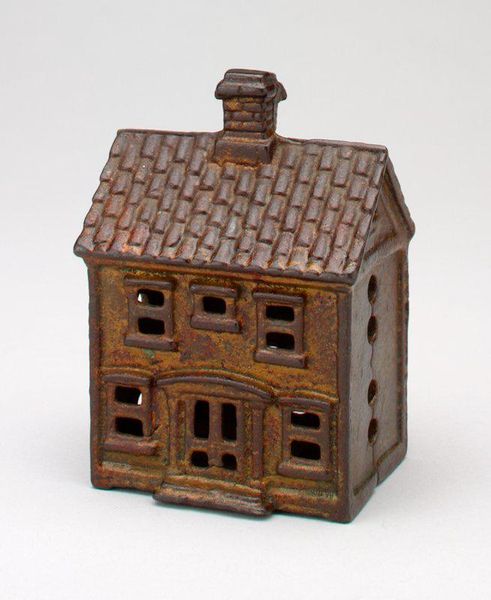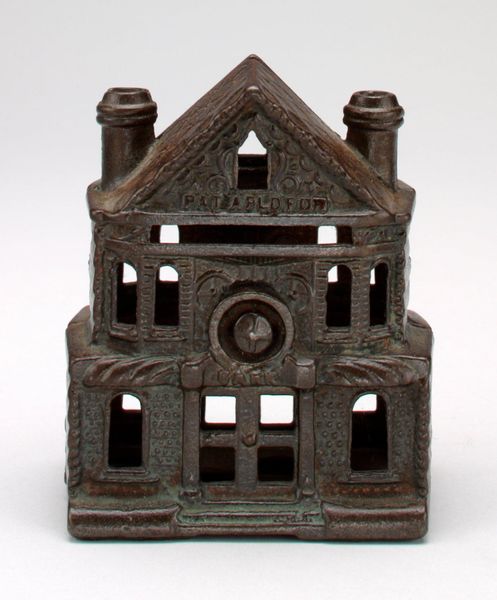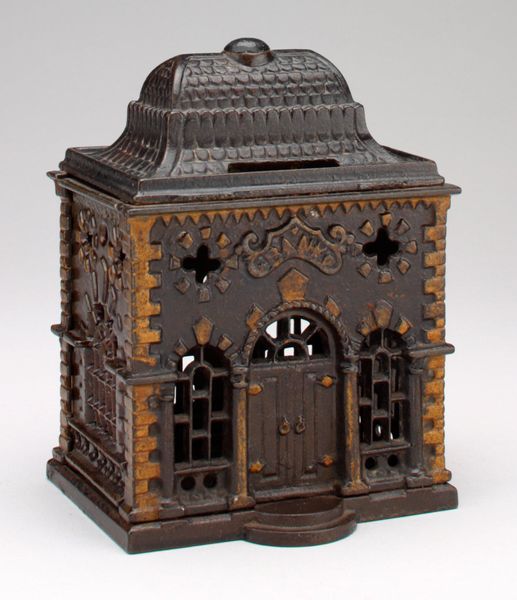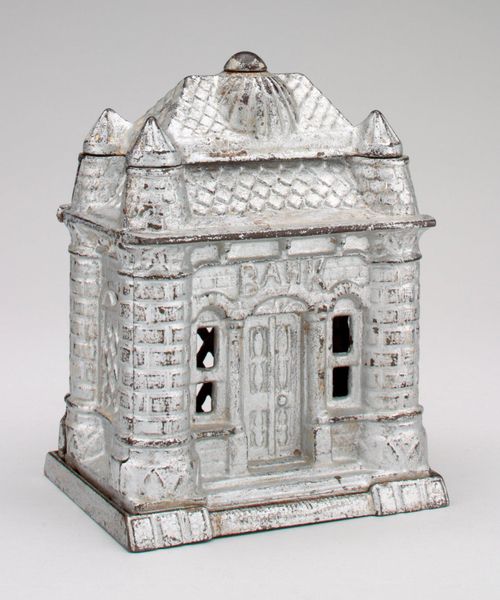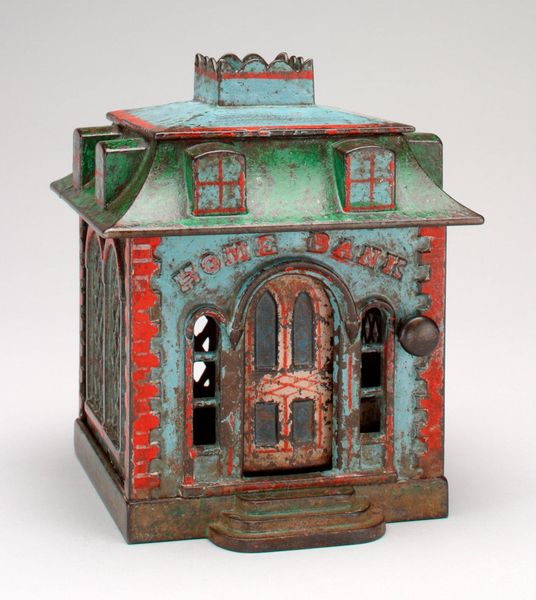
assemblage, metal, sculpture, architecture
#
assemblage
#
metal
#
traditional architecture
#
stoneware
#
sculpture
#
decorative-art
#
architecture
Dimensions: 3 1/4 x 2 5/8 x 2 3/8 in. (8.26 x 6.67 x 6.03 cm)
Copyright: Public Domain
Curator: Well, hello there. Now, isn’t this a peculiar gem? It's an artwork fabricated circa 1895 by the H. L. Judd Manufacturing Company called "-Bank- still bank." Made of metal and exhibiting architectural features, this piece definitely has some stories to tell. My first thought when looking at it? An ominous and secretive place you want to hide your fortunes. Editor: It’s heavy with symbolic weight, right? I see a physical manifestation of institutional power condensed into this small, aged metal structure. There's almost a dystopian commentary on wealth and financial systems, considering it would have been produced during an era defined by expanding industrialization and burgeoning capitalism. Curator: You know, it feels like a childhood toy aspiring to the grandiosity of grown-up finance. I can almost hear the clink of coins falling inside, a naive ambition bumping against this… metallic gravitas you’re talking about. Almost as if dreams of economic power turn into a solemn monument, don’t you think? The green patina adds to the feel. Editor: Absolutely! And notice how the very design replicates traditional architectural elements – a door, windows – reinforcing the bank's image as an established and imposing institution? I am thinking of Michel Foucault's arguments about architecture as a disciplinary technology... Even in miniature, its visual vocabulary perpetuates social power structures. Curator: Which kind of flips things around! A bank that’s actually supposed to empty your pockets, is in this form holding onto something – childhood hope. What happens to this "promise" of money, held inside something solid like metal but so fleeting and unreliable at the same time? Is that what draws me to this paradoxical form? It’s oddly sad. Editor: Or consider the context— late 19th century. Who exactly was encouraged or allowed to engage with such “banks?" Gender and race certainly played a part. Was the idea of "banking" equally accessible? I doubt it. This changes our reading of the piece entirely! Curator: Gosh. Now I am wondering who was saving and whose hands crafted this metallic architecture. Did these "dreams" trickle down, somehow? Well, this piece will stick with me longer than I thought! Editor: Absolutely! Hopefully it gets the listeners to interrogate power and historical access associated with it!
Comments
No comments
Be the first to comment and join the conversation on the ultimate creative platform.


